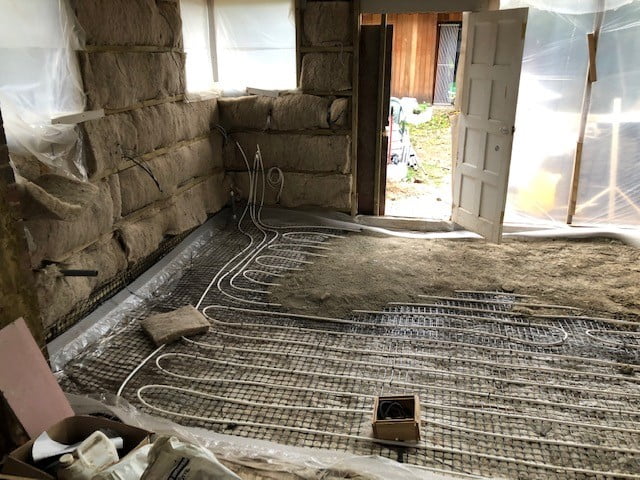When Emilie and her husband bought their house in 2009, it needed a full renovation, including replacing the existing 40-year-old boiler. In the process of installing a new washing machine, the gas supply to the boiler was shut off – and failed to come back on. For the next two years, they lived with no central heating and relied on an immersion heater for hot water and oil radiators for heating.
The first phase of the renovation was to replace the heating system – with the gas pipes and electrics moved to make space for a future loft conversion. During this stage, Emilie made sure the house was as energy efficient as possible. The property is a 1940s semi-detached, cavity wall home, but they added more insulation than building regulations required at the time.
While Emilie considered installing a heat pump at this stage in the renovations, they couldn’t stretch their budget to cover the upfront cost. However, they opted for an energy efficient boiler with water tank, which would be compatible with solar thermal, with a view to installing such a system later. The boiler they chose works best when running almost constantly; it’s regulated by the outside air temperature to ensure the house maintains a certain temperature. It also requires oversized radiators that run at a lower temperature, which are also better suited for use with a heat pump.


